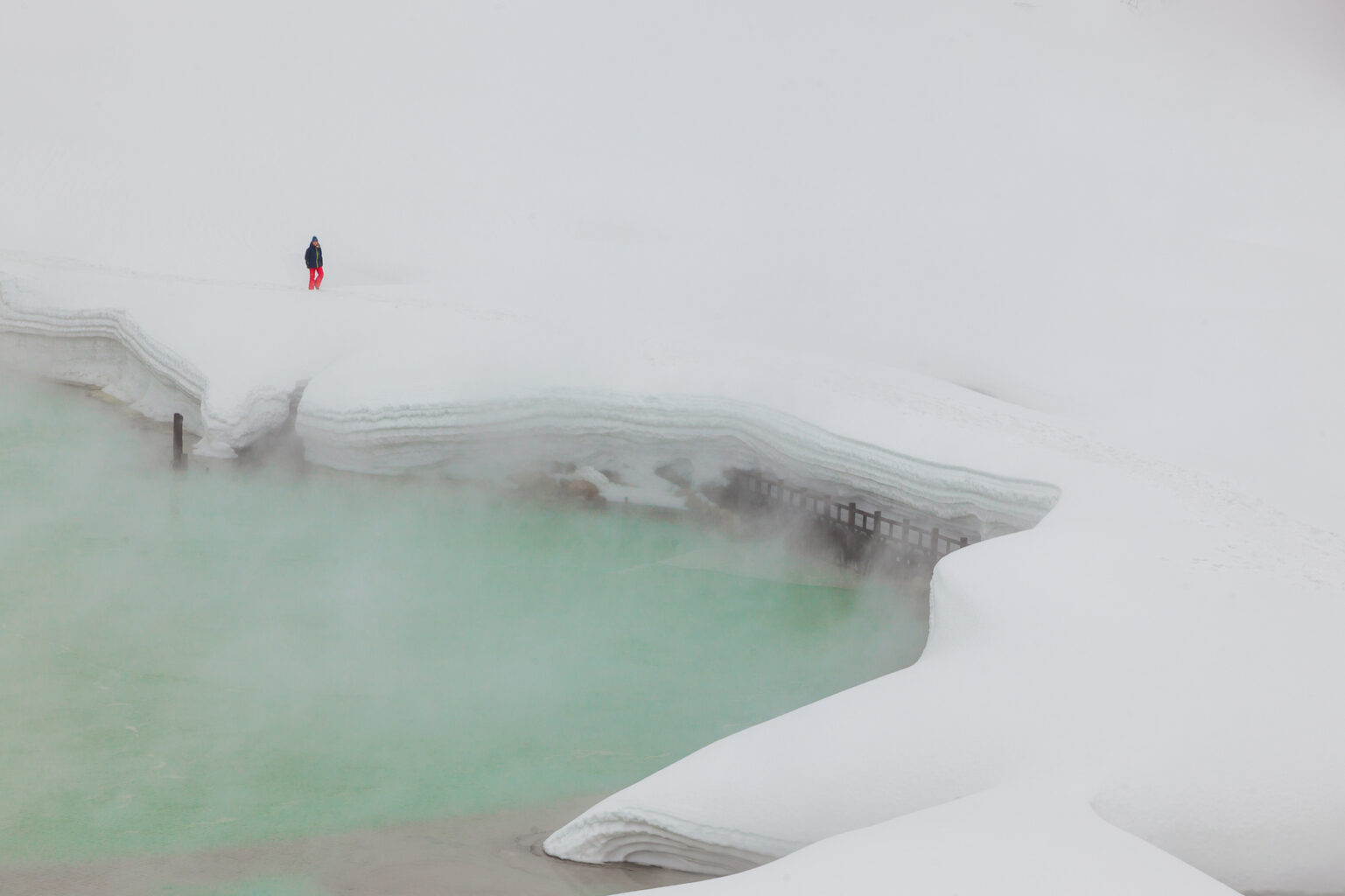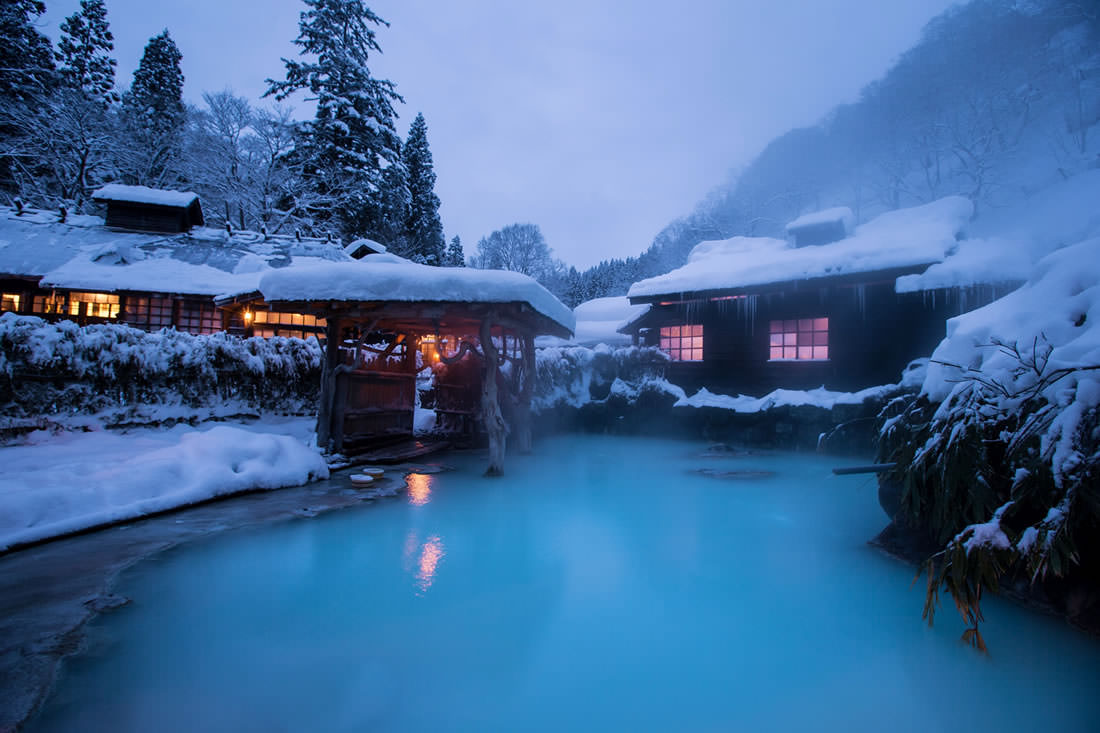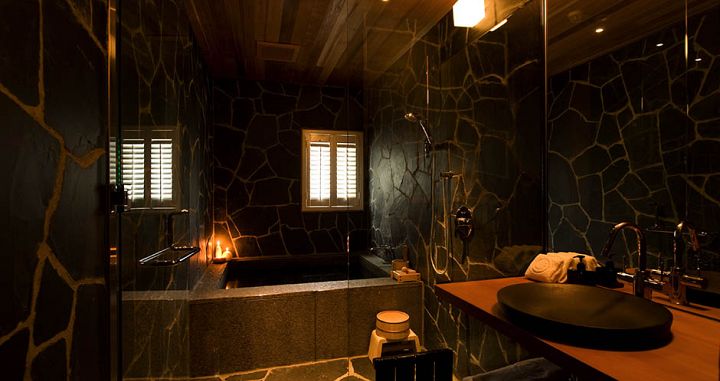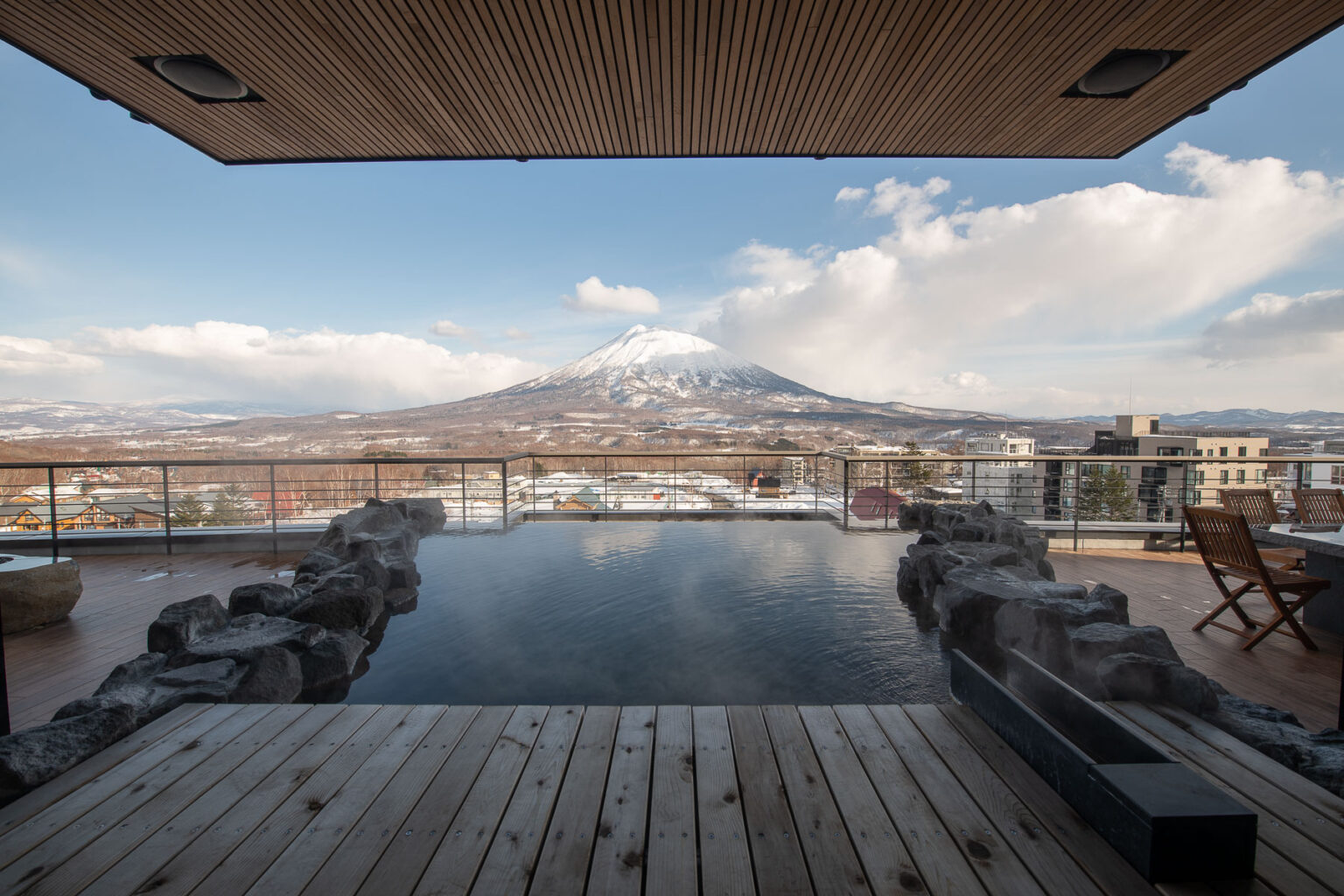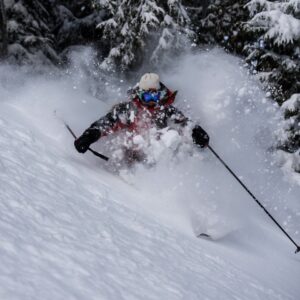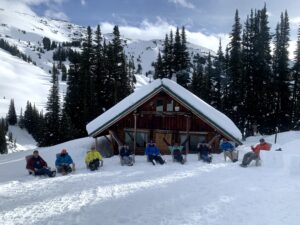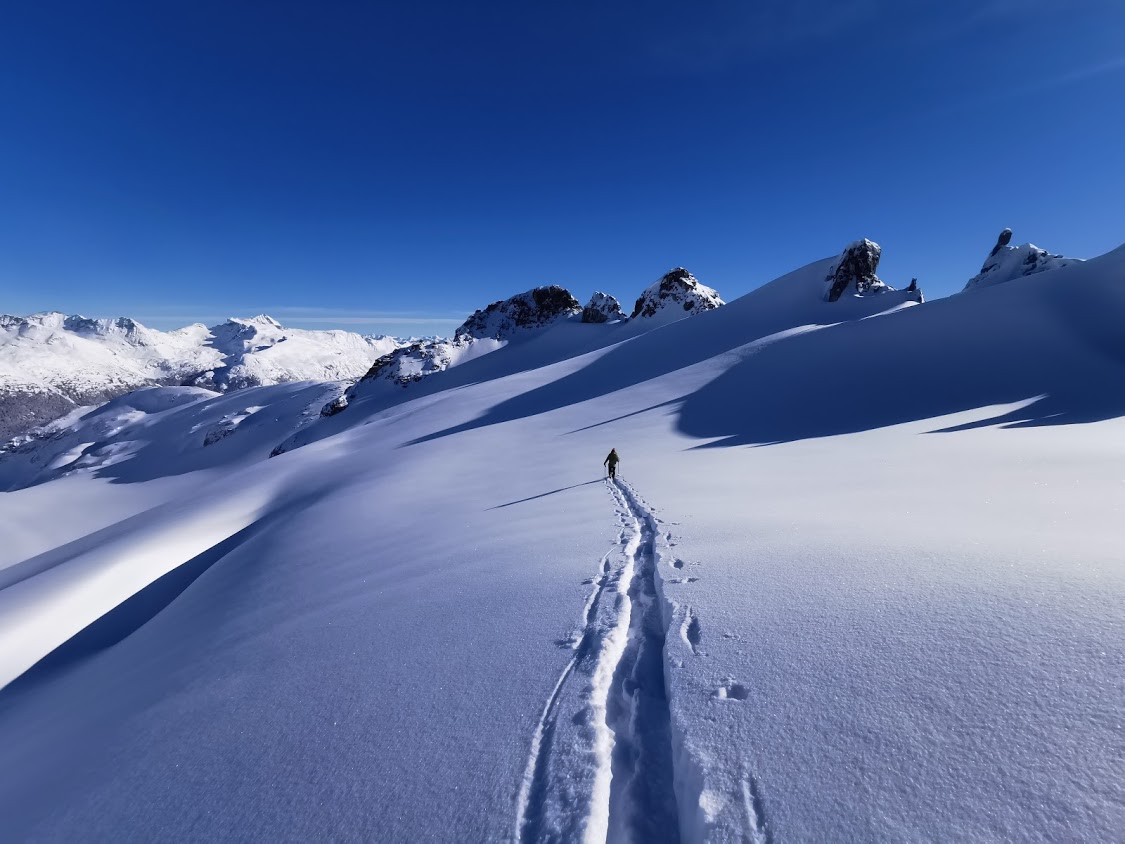Most people don’t take much convincing to visit the onsen after a day of mountain adventure. Chilly toes, flushed cheeks and tired bodies are the essential ingredients for the perfect onsen experience. Just peel off your layers, wash, then soak until cooked through. You will feel warm, tension-free and ready for another soul-filling day of snow adventures.
Discover the Japanese fountain of youth…
By definition, onsen water must contain at least one of nineteen designated chemical elements and be at least 25˚C when it comes out of the ground. Most onsen are piping hot, at least 35 – 40˚C. The health benefits of onsen water have been well-documented since the early eighteenth-century; if you have an ailment, a dip in the silky-smooth thermal elixir is likely to soothe it.
In ski resort areas, most Gaijin (foreigners) will notice three different types of onsen:
-
hotel/resort onsen
-
traditional rustic onsen
-
baths (or sentō)
Here’s what to expect from the three different types of onsen experiences on offer… and why you simply cannot pass up your chance to bathe naked with strangers.
For a full run down on how to onsen check out; Our essential guide to onsen etiquette.
Soak up some luxury…
The hotel/resort onsen is the one you see on the cover of a brochure. With beautifully manicured private outdoor pools and elaborate modern indoor facilities, these onsen are usually part of a resort or hotel, but they are open to walk-ins. You will be greeted in English and will bathe amongst people from the East and West. There are often spectacular gardens and views and the mood is usually contemplative or quietly social.
Step back in time…
Traditional onsen are minimalistic, quaint old buildings tucked away in the mountainside or side streets and managed by a local family. Some are automated which means you may not see or speak to a single soul. If you do, they’ll likely be locals quietly going about their day. These onsen are a quirky but quintessential part of Japanese culture and are worth hunting down. Some even serve onsen tamago, an egg slow-cooked to perfection in the hot spring water after bathing. Don’t expect anyone to speak English. Do expect a full immersion into authentic Japanese culture that you won’t find in resort hotels.
All baths are relaxing…
Sentō (or bath) is a public bath that is usually found in a Ryokan, a small Japanese pension or hotel. Before homes or hotel rooms in Japan commonly had baths, this is where the people would go to wash. Despite the decreasing numbers of these communal bathhouses, some Japanese feel that it’s important to be physically close to others socially and that it will lead to emotional intimacy. Sentō can also be found in large luxurious hotel chains in cities that do not have access to an onsen hot spring. There might be no minerals in the water, but aside from that, the experience is similar and wonderfully relaxing.
Dip your toe in…
For those feeling a little prudish, it’s totally okay, ask around and choose an onsen that you think you’ll feel comfortable in. You can chill out solo in a corner of a giant hot pool, take your kids (who will think it’s the best thing ever) or go with a friend and have a quiet chat. No one really seems to care about being nude (aside from newbies) so keep your eyes up and go with the flow. You will be surprised how quickly you become accustomed to it and look forward to the next time.
Private onsens… the 4th type of onsen.
Ask your local contact if there is an onsen in town that you can book out exclusively for your group. You can wear bathers, have a mixed onsen or simply lap it up yourself for an hour or so. Perfect.
Don’t fancy using a public onsen? Check out this incredible Niseko penthouse with 2 private rooftop onsens.
Mabey Ski’s adventure designers have travelled and skied all over the world to find the most unique and wonderful ski experiences on the planet. If you are interested in heading to Japan or anywhere else in the world for your next adventure, then we are here to show you how.

